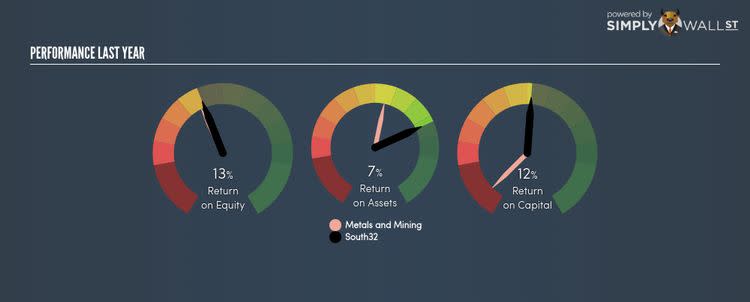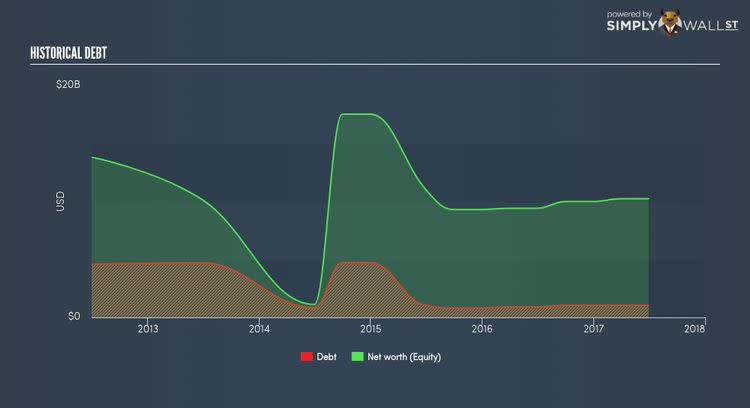Can South32 Limited’s (ASX:S32) ROE Continue To Surpass The Industry Average?

South32 Limited (ASX:S32) outperformed the Diversified Metals and Mining industry on the basis of its ROE – producing a higher 12.52% relative to the peer average of 11.83% over the past 12 months. While the impressive ratio tells us that S32 has made significant profits from little equity capital, ROE doesn’t tell us if S32 has borrowed debt to make this happen. Today, we’ll take a closer look at some factors like financial leverage to see how sustainable S32’s ROE is. Check out our latest analysis for South32
Peeling the layers of ROE – trisecting a company’s profitability
Firstly, Return on Equity, or ROE, is simply the percentage of last years’ earning against the book value of shareholders’ equity. It essentially shows how much S32 can generate in earnings given the amount of equity it has raised. In most cases, a higher ROE is preferred; however, there are many other factors we must consider prior to making any investment decisions.
Return on Equity = Net Profit ÷ Shareholders Equity
Returns are usually compared to costs to measure the efficiency of capital. S32’s cost of equity is 9.94%. This means S32 returns enough to cover its own cost of equity, with a buffer of 2.59%. This sustainable practice implies that the company pays less for its capital than what it generates in return. ROE can be dissected into three distinct ratios: net profit margin, asset turnover, and financial leverage. This is called the Dupont Formula:
Dupont Formula
ROE = profit margin × asset turnover × financial leverage
ROE = (annual net profit ÷ sales) × (sales ÷ assets) × (assets ÷ shareholders’ equity)
ROE = annual net profit ÷ shareholders’ equity
The first component is profit margin, which measures how much of sales is retained after the company pays for all its expenses. Asset turnover reveals how much revenue can be generated from S32’s asset base. And finally, financial leverage is simply how much of assets are funded by equity, which exhibits how sustainable S32’s capital structure is. Since financial leverage can artificially inflate ROE, we need to look at how much debt S32 currently has. The debt-to-equity ratio currently stands at a low 10.11%, meaning the above-average ROE is due to its capacity to produce profit growth without a huge debt burden.
What this means for you:
Are you a shareholder? S32 exhibits a strong ROE against its peers, as well as sufficient returns to cover its cost of equity. Since ROE is not inflated by excessive debt, it might be a good time to add more of S32 to your portfolio if your personal research is confirming what the ROE is telling you. If you’re looking for new ideas for high-returning stocks, you should take a look at our free platform to see the list of stocks with Return on Equity over 20%.
Are you a potential investor? If you are considering investing in S32, looking at ROE on its own is not enough to make a well-informed decision. I recommend you do additional fundamental analysis by looking through our most recent infographic report on South32 to help you make a more informed investment decision.
To help readers see pass the short term volatility of the financial market, we aim to bring you a long-term focused research analysis purely driven by fundamental data. Note that our analysis does not factor in the latest price sensitive company announcements.
The author is an independent contributor and at the time of publication had no position in the stocks mentioned.


